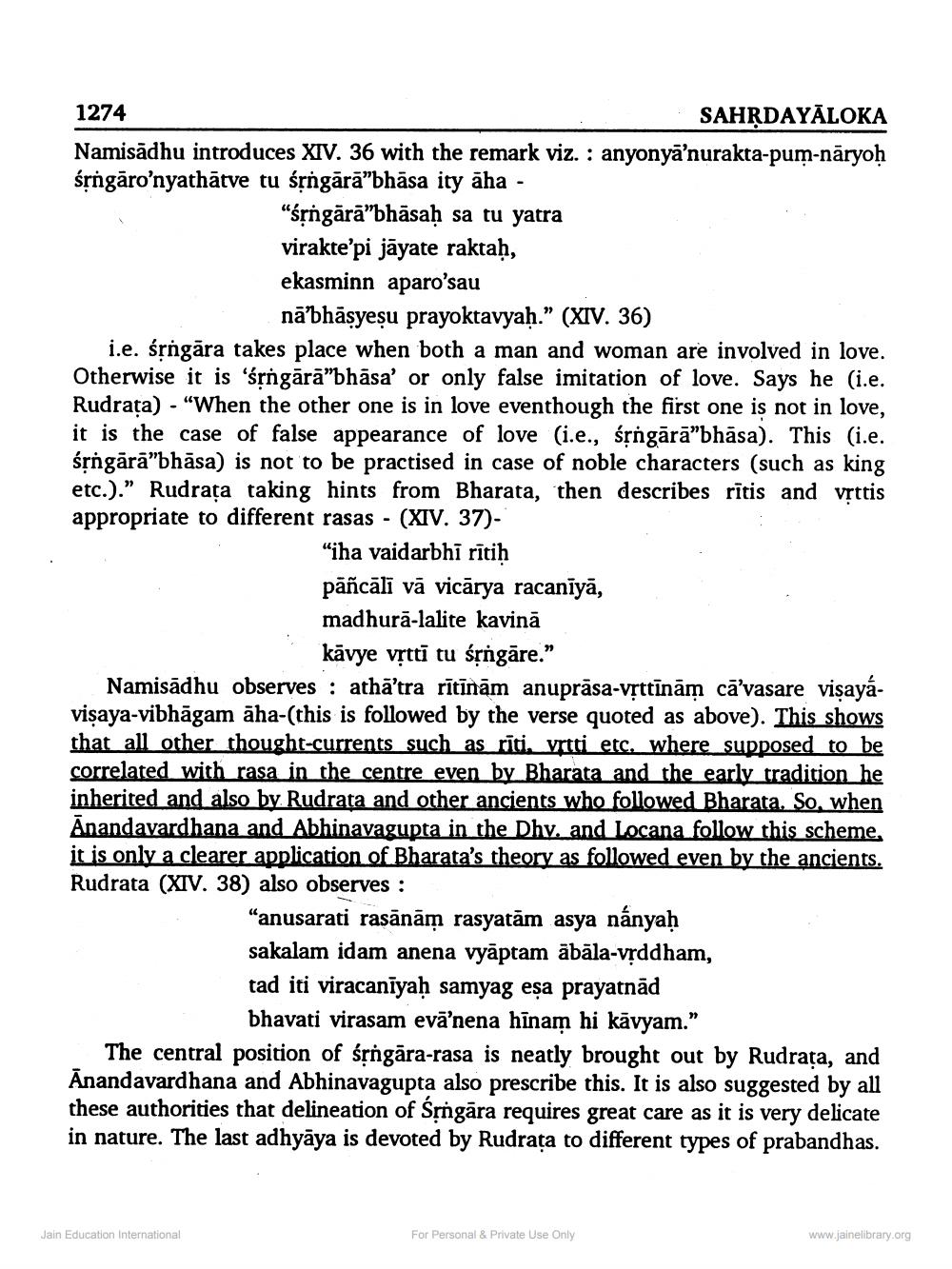________________
1274
SAHRDAYĀLOKA Namisādhu introduces XIV. 36 with the remark viz. : anyonyā'nurakta-pum-nāryoh śrngāro'nyathātve tu śrngārā”bhāsa ity āha -
"śộngārā”bhāsaḥ sa tu yatra virakte’pi jāyate raktaḥ, ekasminn aparo'sau
nā’bhāsyeșu prayoktavyah.” (XIV. 36) i.e. íộngāra takes place when both a man and woman are involved in love. Otherwise it is 'śộngārā”bhāsa' or only false imitation of love. Says he (i.e. Rudrața) - "When the other one is in love eventhough the first one is not in love, it is the case of false appearance of love (i.e., śrngārā”bhāsa). This (i.e śộngārā”bhāsa) is not to be practised in case of noble characters (such as king etc.)." Rudrata taking hints from Bharata, then describes rītis and vrttis appropriate to different rasas - (XIV. 37).
"iha vaidarbhī rītiḥ pāñcāli vā vicārya racanīyā, madhurā-lalite kavinā
kāvye vșttī tu śộngāre." Namisādhu observes : athā'tra rītīnām anuprāsa-vrttīnām cā'vasare visayavisaya-vibhāgam āha-(this is followed by the verse quoted as above). This shows that all other thought-currents such as rīti, vrtti etc. where supposed to be correlated with rasa in the centre even by Bharata and the early tradition he inherited and also by Rudrata and other ancients who followed Bharata. So, when Anandavardhana and Abhinavagupta in the Dhy. and Locana follow this scheme, it is only a clearer application of Bharata's theory as followed even by the ancients. Rudrata (XIV. 38) also observes :
"anusarati rasānām rasyatām asya nányaḥ sakalam idam anena vyāptam ābāla-vrddham, tad iti viracanīyaḥ samyag esa prayatnād
bhavati virasam evā’nena hīnam hi kävyam.” The central position of śộngāra-rasa is neatly brought out by Rudrata, and Anandavardhana and Abhinavagupta also prescribe this. It is also suggested by all these authorities that delineation of Sțgāra requires great care as it is very delicate in nature. The last adhyāya is devoted by Rudrata to different types of prabandhas.
Jain Education International
For Personal & Private Use Only
www.jainelibrary.org




